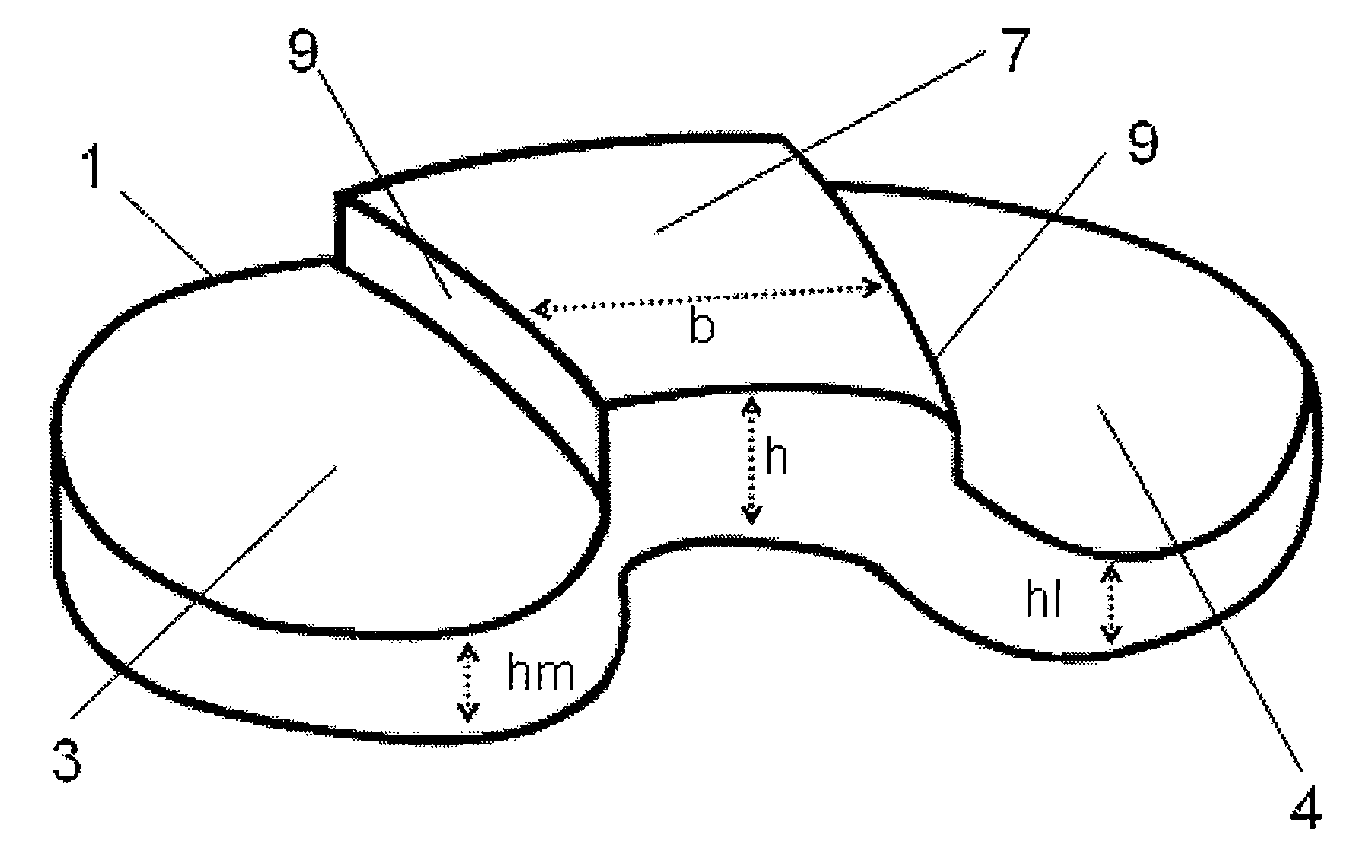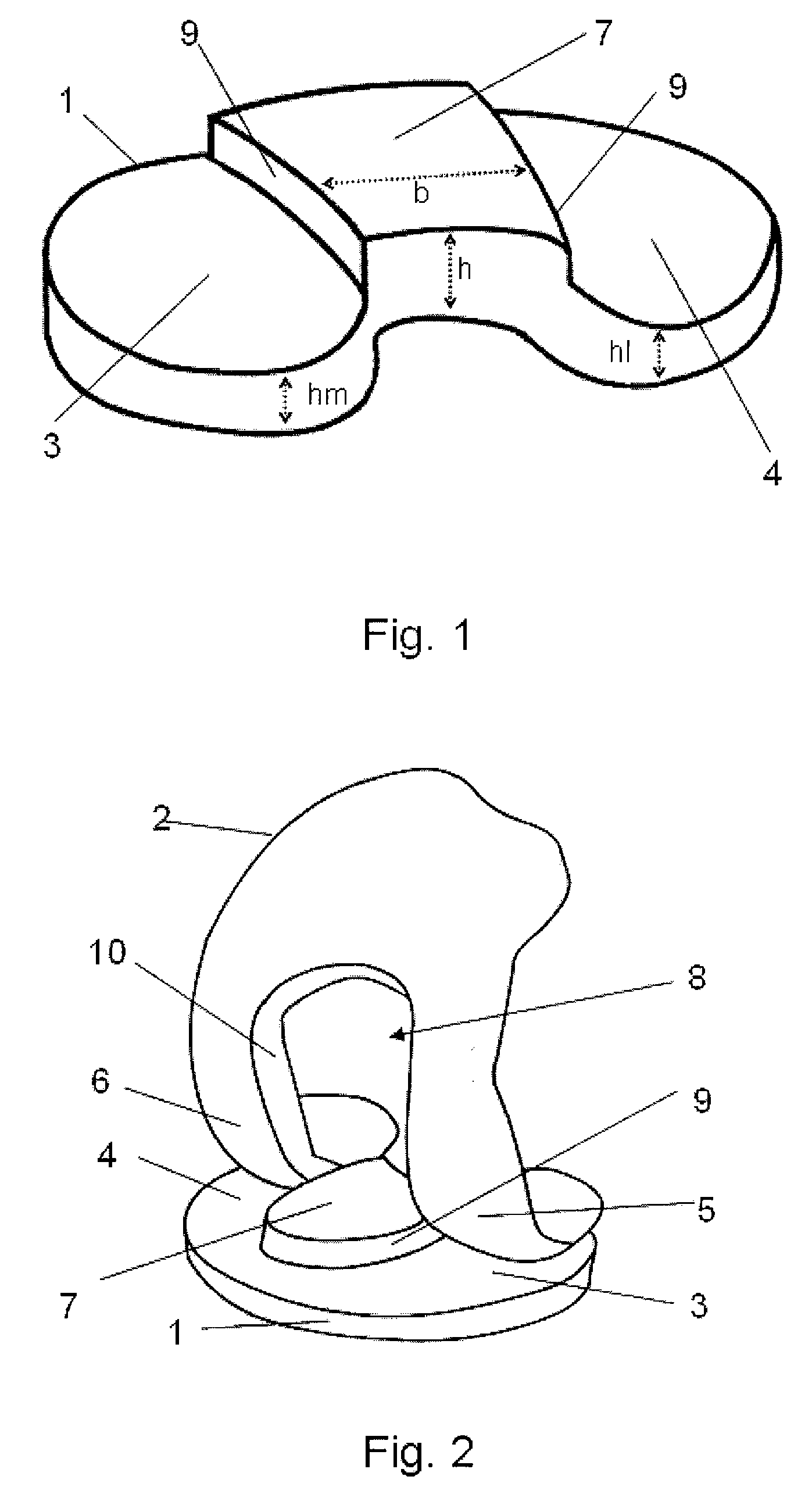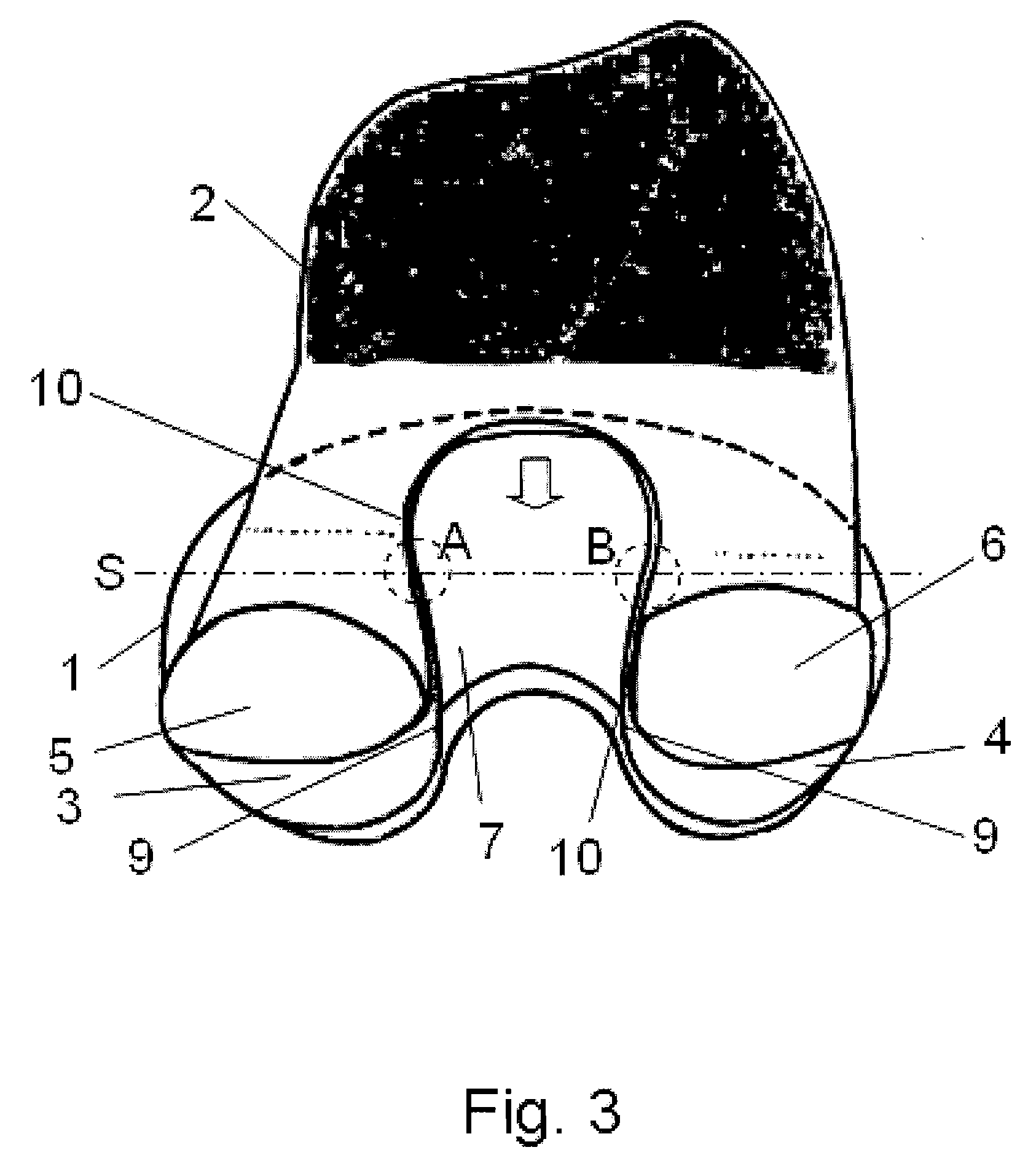Artificial joint and a joint part intended for this purpose
a technology of artificial joints and joints, applied in knee joints, prostheses, medical science, etc., can solve problems such as tearing of cruciate ligaments, and achieve the effect of low cos
- Summary
- Abstract
- Description
- Claims
- Application Information
AI Technical Summary
Benefits of technology
Problems solved by technology
Method used
Image
Examples
Embodiment Construction
[0033]The artificial joint according to the invention will be explained in greater detail in the following by way of FIGS. 1 to 5, FIG. 1 showing a perspective view of a tibial joint part 1 and FIG. 2 showing a perspective view of an arrangement of the tibial joint part 1 and a femoral joint part 2 as an endoprosthesis for a human knee joint in a highly bent position. Each joint part 1 comprises two functional surfaces 3, 4, each of which cooperates with a functional surface 5, 6 of the other joint part 2, the two functional surfaces 3, 4, 5, 6 of each joint part 1, 2 being formed so as to be spheroidal and convex-concave, concave-convex, or convex-convex in the proximal-distal arrangement. The functional surfaces 3, 4, 5, 6 are formed in such a way that upon extension / flexion of the joint, a combination of a rolling and a sliding movement occurs. In order to provide, in each bending position, a posterior blocking means which corresponds to the rear cruciate ligament, and moreover t...
PUM
 Login to View More
Login to View More Abstract
Description
Claims
Application Information
 Login to View More
Login to View More - R&D
- Intellectual Property
- Life Sciences
- Materials
- Tech Scout
- Unparalleled Data Quality
- Higher Quality Content
- 60% Fewer Hallucinations
Browse by: Latest US Patents, China's latest patents, Technical Efficacy Thesaurus, Application Domain, Technology Topic, Popular Technical Reports.
© 2025 PatSnap. All rights reserved.Legal|Privacy policy|Modern Slavery Act Transparency Statement|Sitemap|About US| Contact US: help@patsnap.com



